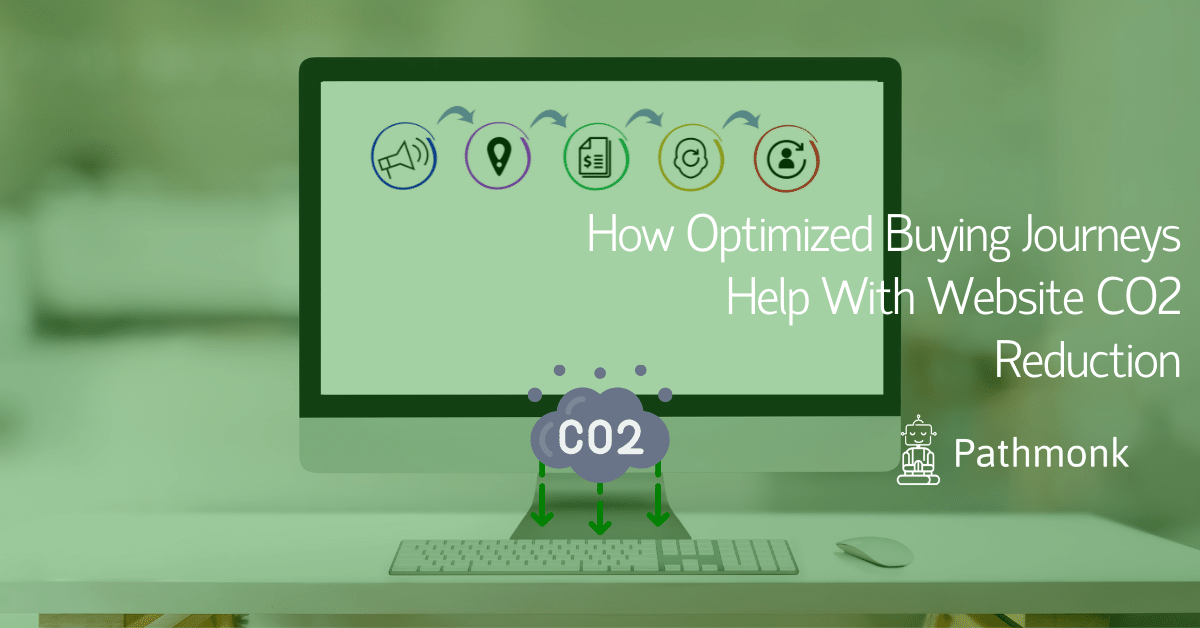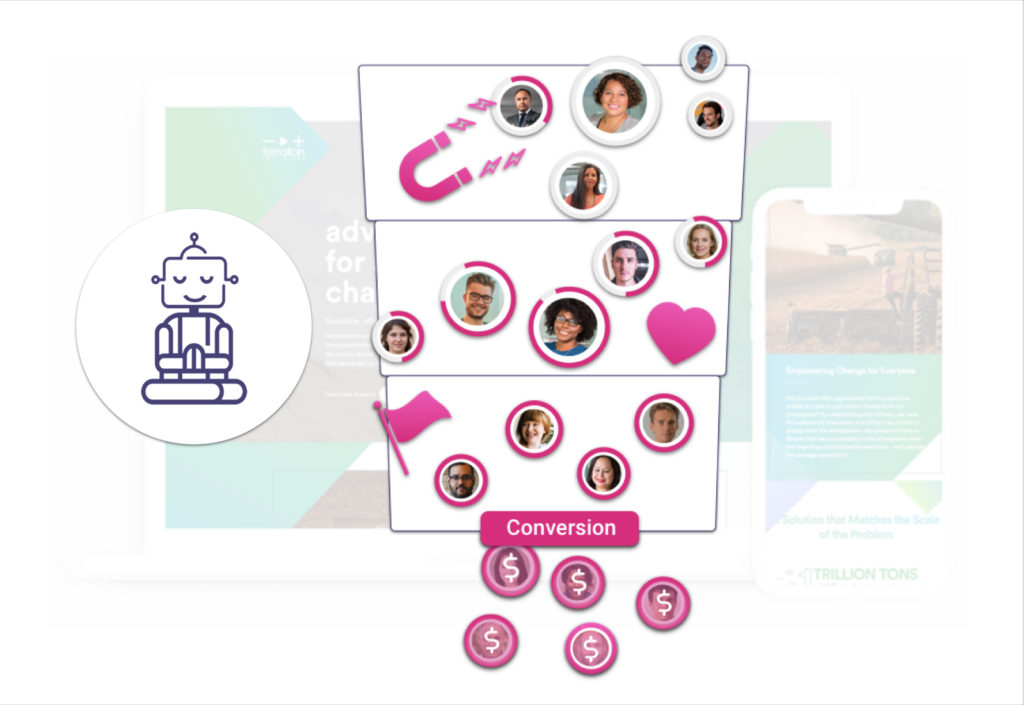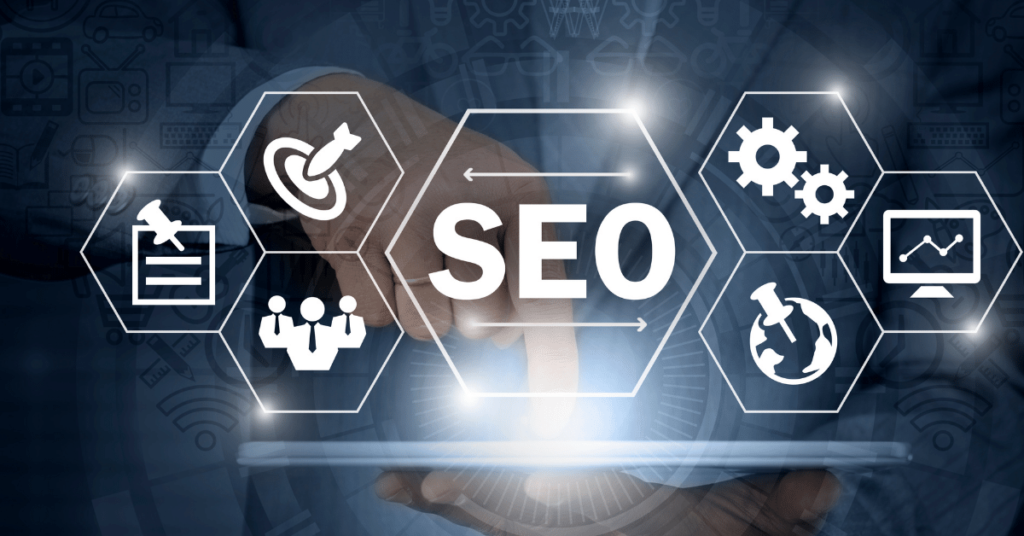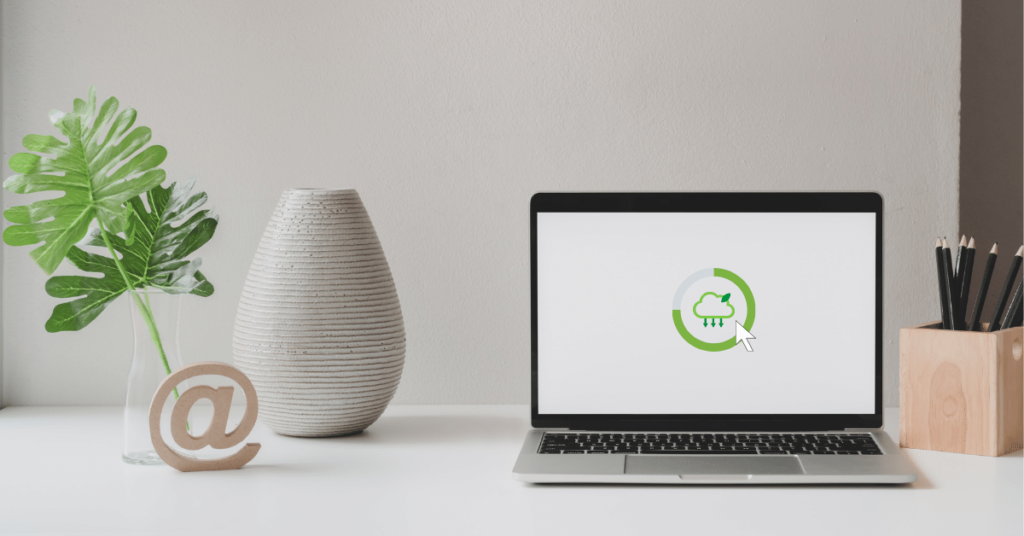
Have you optimized your buying journey in a way that helps your customers reach their goals quickly? It’s more important than ever to simplify our buying journeys and provide content and experiences that have one goal in mind: to move our prospects even closer to purchasing our products or services.
Not only is it important to meet the demands of our prospects with optimized, simplified, and valuable buying journeys, but it’s important to consider the impact it has on our efforts to encourage website CO2 reduction, and play our part in the fight against climate change.
The Environmental Impact
So much of our digital lives exist on the web, from watching tv online to social media to websites to email communication. It’s easy to believe that all of this exists “on the internet.” – This digital, virtual concept. However, it can have quite a physical impact on our environment. The internet connects computers together. If the information and data from our digital lives aren’t being stored on our own computers, they’re being stored on different computers somewhere else; hence data centers.
These data centers use standard grid electricity as their main source of power. When we consider what it takes to complete a simple website visit; from the energy required on the end user’s device, the communication networks, the data centers where a website is hosted, and the storage of the data, we can see that the resources that are needed to accomplish this, quickly start to add up.
Automatically Make Your Website Carbon Neutral
Pathmonk Climate automatically offsets your emissions through high-quality climate projects, while analyzing and calculating your website’s carbon footprint. Showcase your climate actions with your zero-emission website certificate.

We additionally have to consider the continuous use of energy that is needed for data transfer. Loading and transferring data from the data center through the network to the end user requires energy. The more data our websites have the more energy is burned.
To take it a step further; elements such as the programming language used on the website can mean up to x10 more energy consumption, not to forget the cooling required to ensure those data centers function reliably. Data centers generate a lot of heat and the energy required to cool down the systems is quite significant. From the batteries to the generators to the fire protection system, running and maintaining data centers is starting to have an environmental impact.
Why You Need Website CO2 Reduction
Data centers account for 3% of the global electricity supply and consume more power than the entire UK. Data centers also contribute 2% of the total global greenhouse gas emissions. So it’s no surprise that, yes, websites emit CO2.
With 252,000 new websites being created every day and 63.1 percent of the world’s total population using the internet daily, it’s starting to put pressure on our environment. The world’s internet population grew by almost 180 million in the 12 months leading up to July 2022.
As internet users grow so too does the demand for data centers. With the digital world forever expanding and as this form of pollution is expected to do more damage, the awareness of the environmental impact of the web still requires more attention. However, your ambition to encourage Website CO2 Reduction and create a sustainable website is a small step that can collectively make a big difference.
Optimized Buying Journeys & Website CO2 Reduction
Now, that we understand the full impact our websites can have on the environment. We must take action. Climate action is essential to business success; as employers, customers, and even investors demand climate accountability and responsibility from modern, future-proof, and innovative companies.
The heavier a car the greater its fuel consumption, and the more CO2 emissions. Therefore, reducing mass is an effective way to reduce a vehicle’s emissions. Our websites also carry weight and this weight directly influences the amount of CO2 emissions. And as I relished summer delicacies and added a few extra pounds, websites have started to do the same. Extravagant animations, customized fonts, and unorganized, over-complicated buying journeys have all added to the weight of our websites. It’s time to slim down.

If doing it for the environment isn’t enough motivation, doing it for our prospects should be. Page weight can reduce the page load time, ultimately improving user experience and SEO. By prioritizing the buying journey and working to improve the overall customer experience we can ultimately reduce our website’s weight and encourage website CO2 reduction. Good for prospects, good for the planet.
What is an Optimized Buying Journey
As we each define our perfect target audience we start to understand our users and prospects more. With knowledge and data, we can craft buying experiences that remove boundaries and serve prospects in their journey to purchase.
The buyer’s journey is every step or action that a prospect is going to take before they decide whether or not they want to buy your product or service. Consumers enjoy the freedom of independent research, as B2B buyers often make final-purchase decisions without even reaching out to the business itself. This means our websites play a more critical role in the digital world and directly influence the success of our businesses.
Therefore an optimized buying journey is a process, powered by targeted-audience data, that successfully, simply, and quickly guides prospects through their awareness, consideration, evaluation, and decision-making steps. Ultimately, giving you the power to guide, influence, and direct the entire path to purchase.
An Optimized Buying Journey That Encourages Website CO2 Reduction
1. Reduce Page Load Time
Simplicity is key. Customized fonts, large images, and data-heavy animations aren’t doing the selling of your products and services. Sure, they may be exciting and look good but they’re adding more weight to that waistline. We must prioritize the needs of our audience over our own desires. That weight increases page load time, losing your customers’ attention and contributing to high CO2 emissions. With simplicity comes a lighter website which results in website CO2 reduction.

2. SEO
We’ve noticed that we love high volumes of website traffic a little too much. There we go again; letting our hunger get in the way of healthy choices. Large numbers in website traffic may look impressive but if they aren’t converting it can mean very little for our business results and a lot for the impact on the environment. By focusing on SEO you can attract the right buyer persona, and improve the quality and quantity of website traffic. Ultimately, reducing the amount of data transfer, and inviting traffic that is more likely to convert. Resulting in website CO2 reduction.
3. Quality Content & Appropriate CTAs
Now that you’ve attracted the right traffic with powerful SEO, the challenge is converting these prospects in a quick and frictionless manner. Arriving at a piece of content that doesn’t satisfy a reader is an all-to-common way of losing a prospect’s interest. By acknowledging the buyer journey stage we can tailor content, experiences, and CTAs in order to influence the prospect towards a final purchase.
4. Messaging & Positioning
This can often take trial and error as we spend more time getting to know and understand our perfect customers. With crystal clear messaging and positioning you leave no doubt in your prospects’ minds. As you address and speak directly to your prospects’ wants and needs you remove all forms of friction in their buying journey. By reducing friction, getting to the point, giving prospects exactly what they want and need, and eliminating all possible questions, your prospects navigate through your website quickly on their path to purchase. Reducing the time they spend on your website and ultimately helping with website CO2 reduction.

In Conclusion
With an optimized buying journey, you’re empowering the users to find what they need in fewer clicks. This means you’re providing better value for your readers and your website will be more energy-efficient. With a simplified, lighter website and less traffic coming to your website combined with the right content and CTAs, you have ensured website CO2 reduction and taken action to be a part of a greener planet.
In our mission to help businesses optimize buying journeys and do more for their prospects, combined with our passion for the environment, we’re excited to help you do more for our planet. Even with optimized buying journeys, and lighter websites, we’ll still be emitting CO2 into the environment, so it’s important that we offset these emissions. Through our high-quality climate projects and analysis of your website’s carbon footprint, Pathmonk Climate can help you automatically offset your emissions. You can also get certified; showcasing your actions against climate change and ultimately encouraging others to do the same.
Automatically Make Your Website Carbon Neutral
Pathmonk Climate automatically offsets your emissions through high-quality climate projects, while analyzing and calculating your website’s carbon footprint. Showcase your climate actions with your zero-emission website certificate.









